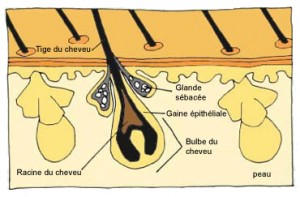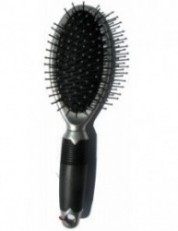A paternity or DNA test can be done with hair samples when it is not possible to analyze buccal DNA.
In general, when comparing DNA for testing, it is preferable to use a mouth swab (buccal sample) where with a swab a few cells from the inside of the cheek and a bit of saliva is used to extract DNA. The buccal swab is simple and ensures the presence of DNA when following the sampling instructions. The most important is to let the stick containing the DNA dry in the open air , to prevent mold.
In cases where it is not possible to provide the laboratory with a DNA saliva sample, it is quite possible to extract DNA from other body parts. You’ve all seen one of these contemporary television series, in which agents roam the forensic crime scene with a flashlight to collect a drop of blood, sweat or a hair on a pillow case.
How to perform a DNA paternity test from hair?
If it’s not possible to analyze DNA taken from a mouth swab, you can use a hair sample for a paternity test. Hair is very resistant to the ravages of time, we lose over fifty per day, they seem to be the ideal sample for a DNA test.
The root of the hair contains sufficient DNA to allow identification of a person, but the stem does not contain enough DNA material to achieve a vector paternity test. So closely observe tha airs before you send them to the laboratory for analysis.
If you closely observes a hair, you can see that there is a shaft and a root. The root or hair follicle is inserted deep into our dermis (skin). This hair root is visible to the naked eye, it forms a small bump of lighter color at the end of our hair. This tiny part contains the same DNA as the cheek-cells or a blood cell.
The root must still be attached to the hair to be useful in paternity testing.
YES -> Hair salvaged from clothes or a hairbrush can be used when the follicle is visible. Recently plucked hair is ideal.
NO -> Cut or shaven hair will not be helpful.
The success rate of extraction of DNA from hair is 75%.
View the success rate of other non-standard samples for DNA analysis.
Is DNA testing still possible when the hair is several years old?
Hair rods barely degrade over time as they are composed of keratin, a very solid protein. However the DNA of the follicles is weaker, mold can irreparably degrade. Unless the hair was permanently exposed to high levels of humidity, DNA hair can be kept for many years.
Even if the hair is very old, the laboratory may perform a DNA paternity test as reliable as if he had a buccal sample. The success rate of 75% for the extraction of DNA means that there is 25% chance that there is not enough DNA for a paternity test. It can be sent to another laboratory fro further analysis at your expense.
A DNA extraction test is performed prior to comparison of DNA profiles among participants. In case of failure of the DNA extraction on a first sample of hair or hair, you just have to adjust to the laboratory the cost of treating other non-standard sample and not the total cost of DNA analysis.
How much hair is needed for a paternity test?
You should ideally have 5 to 10 hair bulbs to have enough material to extract DNA, for some hair is damaged during the DNA extraction process. Please do not touch the hair-roots with your fingers as not to contaminate the sample with your own DNA.
Hair must be placed in a paper envelope on which you have noted the name of the participant, the nature and the estimated age of the hair sample. It is possible to use a plastic bag provided that both the bag and the hairs are completely dry.
Hair DNA extracting price and processing time.
The extra cost for DNA extraction from human hair is normally around $80. Add this to the price of a ‘normal’ paternity test or any other DNA parentage test you have chosen. It will take a few extra days of treatment, the time it takes the laboratory to extract the DNA from the hair samples.
Maternity test with a hair sample.
Hair samples do not contain nuclear DNA because they are composed of keratin proteins and not made from cells with a nucleus. They will not allow to achieve a classic DNA maternity test, but they can be used for a particular type of test: The mitochondrial DNA (mtDNA) test. The mtDNA test verifies membership of a maternal line because the analysis focuses on circular DNA contained in the mitochondria.
If you have a doubt about a paternity test mtDNA may therefore not bring you an answer. There are other options if you want to perform a paternity test but do not have paternal sample, please visit our What DNA test to choose page?
